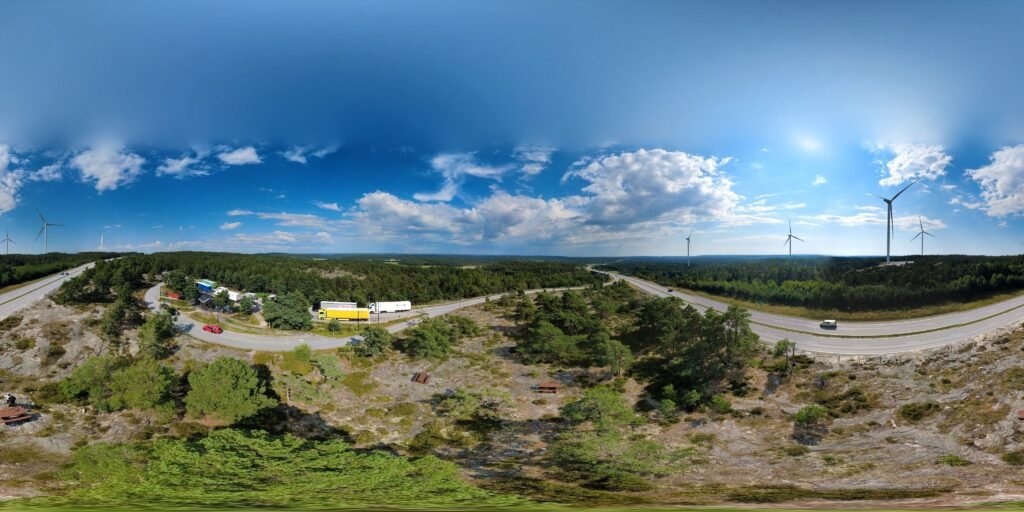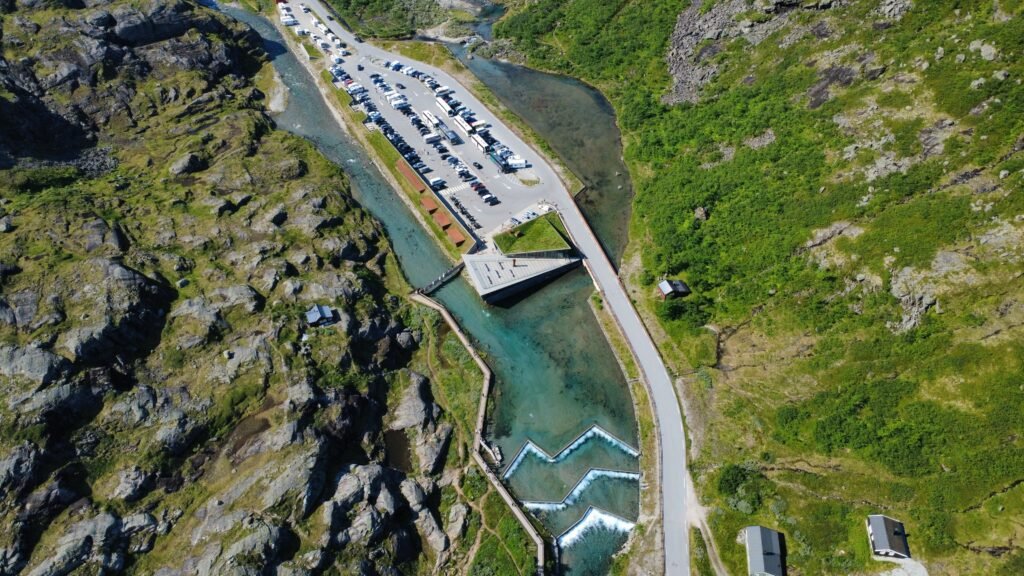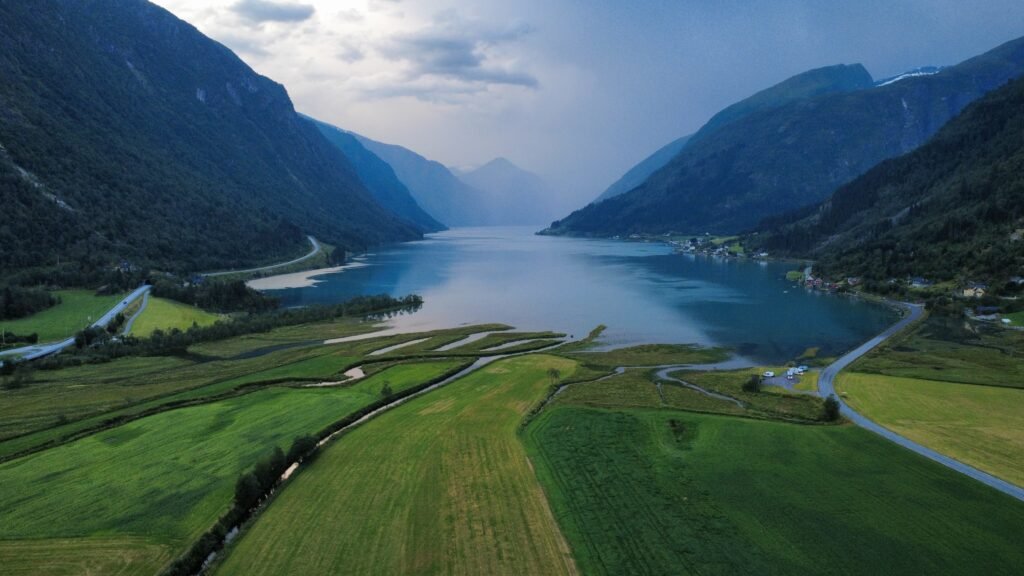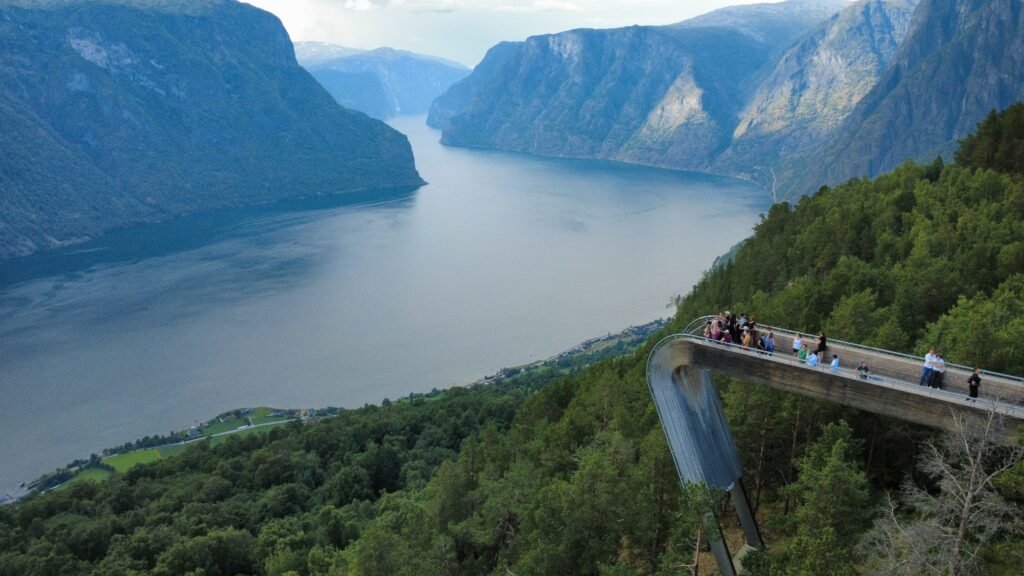Just before heading out on our summer road trip in Norway, Amazon started showing me ads for DJI drones — and guess what? The DJI Mini 4K was 50 euros cheaper than usual! A drone, on sale, right before our trip? That sounded like the perfect spice to add to our scenic journey — especially with our 13th marriage anniversary coming up!
Without thinking too much, I ordered the DJI Mini 4K drone. Excited? Yes. Nervous? Also yes.
Now, I’m not a complete newbie when it comes to drones. Back in Bangladesh, one of my close friends is a professional drone operator and a pioneer in drone-related services. I’ve spent a good amount of time with him, absorbing drone knowledge over tea and tech talk. Once, I even had the chance to fly a professional drone with him over an archaeological site in Bangladesh.
Then I moved to Sweden. After a while, I bought a toy drone — nothing fancy, but it kept me entertained for a year. Then came a long break… until now.
Once the order was placed, all sorts of questions started popping into my head:
Can I still fly a drone after all these years? Will I manage to take professional-looking shots? Am I even allowed to fly a drone in Norway? Or in Europe in general? What if it crashes? What if it hits someone or damages a vehicle?!
Panic mode: activated.
I even tried to cancel the order. But alas! Amazon informed me that the order was already at the final stage of fulfillment and could no longer be canceled. Ahhh!
So, instead of returning the drone once it arrived, I decided to face my fears and dig for answers. And guess what? I found a treasure trove of info that I’m going to share with you here — in my own tone, just like I’d tell a friend.
First Things First: Can You Fly a Drone in Europe?
Yes! You can. But there are a few conditions. Let’s break it down.
Drones in Europe are regulated under rules set by EASA (European Union Aviation Safety Agency). The good news? There’s a structured system. The bad news? You probably need a license.
Drones are categorized under the Open Category for low-risk operations. This is divided into three subcategories:
| Class | Weight | Allowed Flight | Required License |
| C0 | < 250g | Over people (not crowds) | Usually no |
| C1 | < 900g | Near people, but not over crowds | Yes (A1) |
| C2 | < 4kg | Near people with distance | Yes (A2) |
| C3-C4 | < 25kg | Far from people | Yes (A3) |
You can usually find the class label on your drone or its packaging. If there’s no class marking (as with older drones), stricter rules apply.
🔗 More on EASA’s official site
Is a License Enough?
Short answer: Nope.
In most European countries, you’re strongly advised — and often required — to have public liability insurance for your drone. Even the best drone pilots have unexpected crashes. If your drone hits a person, car, or property, you’ll be responsible for any damages. Public liability insurance covers these risks.
It’s not expensive and gives peace of mind. Many insurers offer drone-specific coverage — just make sure it fits your usage (recreational vs. commercial).
Modern Drone Tech: Insanely Smart!
Today’s drones are seriously smart. Flying them almost feels like using a video game controller with wings. Here are just a few features in modern drones like the DJI Mini 4K:
* Obstacle avoidance: Sensors help avoid trees, walls, and even power lines.
* Return to Home: Automatically returns to launch point if battery is low or signal is lost. In fact I have used it most of the times.
* GPS-based stability: Makes flying smooth, even in windy conditions.
* Follow-me and auto-tracking: The drone follows you or a subject automatically!
* QuickShots and cinematic modes: Tap a button and it does perfect orbits, spirals, or boomerangs.
* 4K gimbal-stabilized video: Butter-smooth footage, straight out of the sky.
In short: even if you’re not Spielberg, your drone might make it look like you are.
Local Laws & GDPR: Know Before You Fly
Now here’s something important people often overlook: local regulations.
Even though you’re allowed to fly drones in Europe under general categories, local rules still apply — and they can change from one town to the next.
* Don’t fly near airports, military zones, prisons, government buildings, or restricted airspace.
* Many countries have national park restrictions.
* Always check for temporary flight restrictions (TFRs) — like during public events or emergencies.
Also, be GDPR-compliant. What’s that?
> GDPR (General Data Protection Regulation) is Europe’s privacy law. It means: don’t film people without their permission, especially in private areas. If your drone captures identifiable people in sensitive places — you could face complaints or even legal action.
Use apps or official websites to check no-fly zones and airspace restrictions before every flight. It’s a small effort that saves big headaches.
How I Got My Drone License in Norway
So here’s what I did:
1. Registered at flydrone.no. You can sign up as a private person, an organization, or a drone pilot.
2. After a few hours, they approved my application and sent a payment link.
3. I paid around 20 euros for the year.
4. Then I selected the A1/A3 course — which is good for most hobby flights.
5. After going through the course materials, I took the online exam, which was a simple multiple-choice test.
6. Boom! Passed it, got the license, and I was good to go!
Once you have a drone license from any EASA member country, it’s valid across all of Europe (within the EASA zone). That means my Norwegian license lets me fly in countries like France, Spain, Germany, and others — as long as I follow their local laws and restrictions. Pretty convenient!
For the A2 license, you need extra skills and have to take an in-person exam at a local traffic station.
Norway Road Trip with My Drone – Watch the Videos!
Yes — I flew the drone! And not just that, I captured some jaw-dropping views of Norway’s fjords, mountains, waterfalls, and open skies. Check out the videos below 👇






Final Thoughts
From panicking over crashing a drone, to passing my license test and filming Norway’s epic landscapes — it’s been a wild ride. If you’re planning to get a drone and fly it in Europe, here’s my checklist:
* Know your drone’s class
* Take the proper license exam
* Get public liability insurance
* Stay updated on local and GDPR rules
* Charge your batteries and have fun!